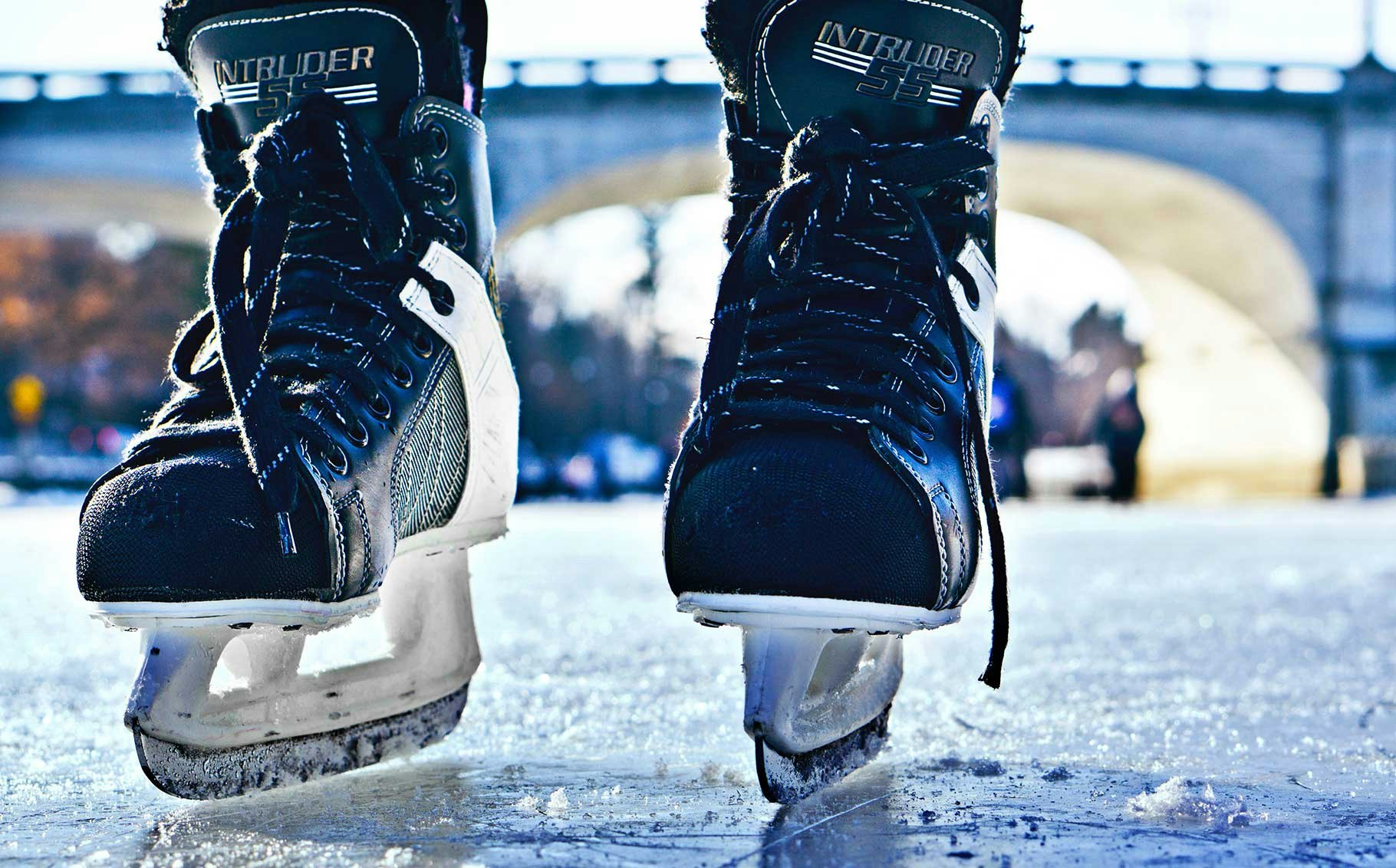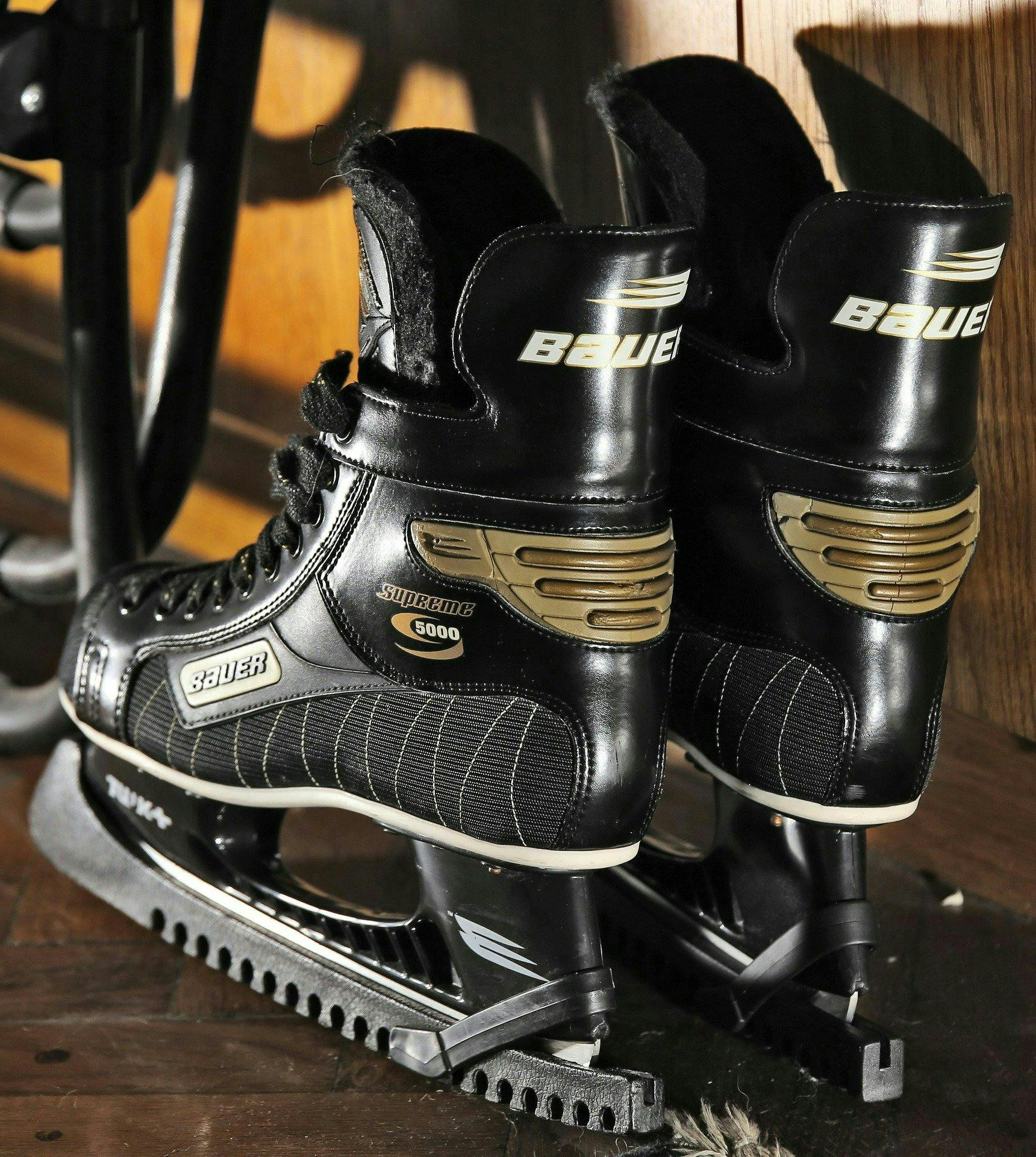Ice hockey skate care and maintenance are important for two reasons. First, they’re your only points of contact with the ice. And second, skates are expensive, so you should want them to last for as long as possible. There are a few simple steps you can take to care for and maintain your skates, keeping them in good condition for longer. These are drying your skates after use, using blade covers during transport, sharpening your skates when the blades are dull, replacing damaged blades, and maintaining blade holders.
Drying Your Skates
Drying your skates is something that should be done every time you remove your skates after getting off the ice. This will keep your skates, and the blades, in particular, in good condition. When you dry your skates, you should do so completely and then allow them to sit out in the open afterward. Then, after they have been left out, dry them again to remove any additional moisture. And don’t forget to take the sole out of your boots to allow them to dry separately.
Storing your skates without first drying them properly can have a few negative impacts. Your boots can start to smell and your blades and rivets can begin to rust. Rust is the primary thing you’re trying to avoid by drying your skates because it can be dangerous.
Blade Covers

Blade covers protect your blades from damage when not being worn on the ice. There are two kinds of blade covers: Hard and soft. Regardless of which you are using, they should be on your blades during transportation. This will prevent your blades from damaging each other or tearing your bag and other equipment.
Hard Covers
Hard blade covers can be used to walk on hard and rough surfaces with your skates on. You should not walk on concrete, cement, or other hard surfaces with your blades exposed, as this will cause them to dull, chip, and/or crack. But, with hard blade guards equipped, this is less of an issue.
However, it’s generally not a good idea to store skates with hard covers on the blades. This is because hard covers can trap moisture, which then leads to blade rusting. Even if you properly dry your blades, a small amount of moisture can still be trapped in this way.
Soft Covers
Soft guards don’t provide the same physical protection for your blades that hard guards do and generally shouldn’t be used for walking on hard or rough surfaces. There are some soft blade covers that are specially designed for walking in. But the best way to protect your blades from damage is to simply not walk with them on.
The primary benefit of soft blade covers is that they are better at keeping your blades dry and rust-free. Some soft guards are made of terrycloth or other absorbent materials, which can prevent moisture buildup while your skates are being stored. However, skates should still be dried off before soft guards are placed over the blades.
Skate Sharpening

Blades dull over time with use, which reduces their performance on the ice. A duller blade will not grip the ice as well as a sharper blade. The sharper the blade, the better it will grip the ice, allowing for increased maneuverability at the cost of some overall speed. However, there is a difference between intentionally opting for speed over maneuverability and simply allowing your blades to become dull.
For more information on skate sharpening, check out this article all about it.
Blade Replacement
Even with skate sharpening to keep the edge on your blades, they will eventually need to be replaced. Over time, the sharpening process will wear down your blades considerably. At a certain point, the blades will be too reduced to be sharpened again, and replacement will be necessary.
Replacement should also be done for any blades that become damaged, and the pair of blades should be replaced at the same time even if only one is damaged. Blades can be chipped, cracked, or broken, which is often the result of a puck impact, walking on hard surfaces without proper covers, or blade on blade contact within your bag. They can also become bent if lateral stresses are applied to them. And rusting may occur if you don’t dry your blades properly.
Some skates will allow you to swap out just the blade, which makes replacement much easier. However, for most skates, the entire blade holder will need to be replaced. If your skates don’t come with holders that allow for the removal of the blade, you can always upgrade to holders that do without buying a new set of skates.
Blade Holder Maintenance
While your blades are important because they’re your connection to the ice, your blade holders are just as important because they connect the blades to the soles of your boots. For this reason, you should regularly check your blade holders for damage.
When blade holders are damaged, which usually comes in the form of cracking, it is most often caused by impacts from the side. Just as with blades, the puck may hit your blade holder causing it to break. And if your blade is bent, that can cause stress which leads to the holder cracking.
Lastly, you should regularly check the rivets that attach the holders to your boots. To find these rivets, remove the footbed within your boot. There are usually 10-14 rivets per boot. If these rivets show signs of rust, which is caused by not allowing the interiors of your boots to dry properly, they should be replaced.
Maintenance Keeps Your Skates Lasting Longer
Properly maintaining your skates – and other hockey gear – will make it last longer, which saves you money over time. For skates, the most important maintenance steps you can take are drying your skates after each use, covering your blades during transportation, sharpening your blades when they get dull, replacing damaged blades, and maintaining your blade holders.
Of course, there’s no point in maintaining your skates if you never use them to hit the ice. Shinny USA is a recreational hockey league for adults 21+. Contact us today for more information on our locations, playtimes, how to sign up, and more.
